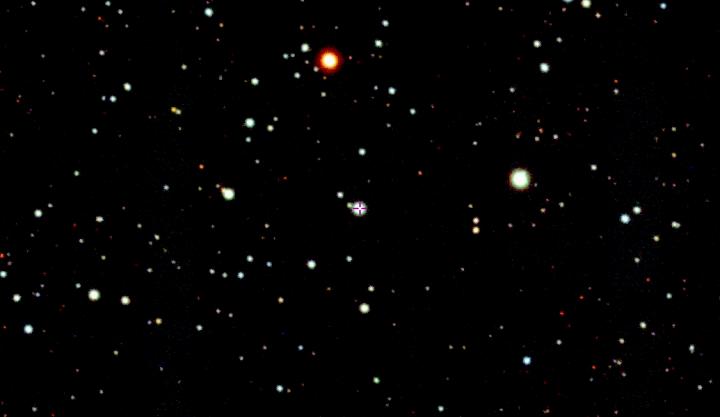
Astronomy is in many ways the greatest “whodunnit” mystery of all. Consider the star SMSS J200322.54-114203.3. This elder star is polluted with heavy elements in amounts that can’t be explained by any known event. These elements – zinc, uranium, europium, and possibly gold – have ratios that don’t match what is produced in normal supernovae or even during the collisions of neutron stars. And their amounts are so low, that they likely all came from a single event that polluted the batch of primordial gas that formed this star.
According to lead author David Yong: The star we’re looking at has an iron-to-hydrogen ratio about 3000 times lower than the Sun – which means it is a very rare: what we call an extremely metal-poor star. However, the fact that it contains much larger than expected amounts of some heavier elements means that it is even rarer – a real needle in a haystack.
But since the star exists, something had to have produced these elements. To quote Sherlock Holmes: When you have eliminated the impossible, whatever remains, however improbable, must be the truth.
There is one additional kind of element-forming star death: the explosion – a hypernova – of an early generation star that was extremely massive and consisted of pretty much only those elements formed in the Big Bang. In a new paper published in Nature, Yong and his team describe how an early massive star, given enough spin and a large enough magnetic field, would be able to produce all the elements seen.
This star, SMSS J200322.54-114203.3, is helping us learn new things about those early stars. Those factors – had to be spinning and had to have a magnetic field – are new constraints on objects we’ve never seen. Astronomers may not use magnifying glasses, but armed with sufficiently powerful telescopes, we can sleuth out amazing mysteries.
More Information
ASTRO 3D press release
“r-Process elements from magnetorotational hypernovae,” D. Yong et al., 2021 July 7, Nature




 Join the Crew!
Join the Crew!
 Escape Velocity Space News
Escape Velocity Space News
0 Comments